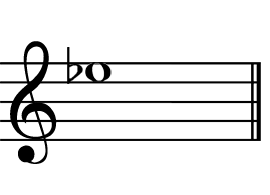Sheet music for beginners - How to play the recorder
Learn how to read music: Free training for sheet music and recorder fingering
If you are a beginner, here is an easy way to begin training yourself on music reading and begin improving your playing skills. Below you will find a particular music note and the fingering used to play that note on the recorder. Use the picture below and learn to identify the notes and fingerings for each note.
 What note is it?
What note is it?
If you have trouble identifying the notes you can put your mouse cursor over the section with the sheet music and it will display the letter of the note shown on the sheet music. Or look at the bottom of the page.If you have trouble identifying the notes you will find the answer at the bottom of the page.
Some people may find it easier to memorize and identify the fingerings first and use them to identify the notes on the sheet music, and some people may find it easier to first memorize the way the note looks on the sheet music and use that to learn to remember the fingering patterns. Whichever way works best for you is what you should start with, but it is important to be able to quickly identify both the notes on the staff and their fingerings on the recorder.Learning the positions of the notes on the piano is also beneficial. Eventually everything will grow together as an unit.
The picture above is a good exercise to memorize the staff, fingerings and piano keys all at once. Click on the correct button that goes with the note displayed on the staff and the fingering pattern for the recorder.
If you have trouble identifying the notes you can put your mouse cursor over the section with the sheet music and it will display the letter of the note shown on the sheet music. Don't worry, if you get a wrong answer you can always try again. Enjoy!
Learn to Play the Recorder - Every Step of the Process is Online
If you have always wanted to learn to play music but never took the time to do so, consider learning how to play the recorder. This instrument is a member of the woodwind family and is very similar to a flute. The reason many choose to learn on this instrument is that is can be taught in a short amount of time and is very easy. First you will need to learn how to read musical notes and then you can start playing. It is best to practice each note until you master it as this will allow you to place your fingers in the proper spots with good control. Many beginner songs are available online so you can get started as soon as your recorder arrives.
Assemble the recorder and pull up a recorder fingering chart as well as some sheet music you would like to try. Blow into the recorder first to get an idea of how it will sound. Next you will need to study the fingering chart you pulled up on the Internet. This allows you to be familiar with each finger combination and the notes it will produce. It is best to memorize the combinations as you will be using them quite frequently. A good fingering chart will show a graphic picture of the recorder. Most use light and dark circles to demonstrate which holes should be covered to produce a specific note.
Now you will want to read easy sheet music to get an idea of what to expect. Musical notation is the same no matter which type of instrument you are playing. Music notes will be written on a music staff and the placement of each note will tell you which note you are to play and for how long. Become familiar with this as it will make playing the instrument much easier. Once you are familiar with these things, it is time to start practicing the individual notes.
Hold the instrument vertically in your left hand and gently blow through the mouthpiece. The most important thing to remember is to keep air flow steady. Most teachers will tell you to start with the B note. This requires that you cover the back hole with your left thumb. Now take your left index finger and cover the first hole on the uppermost side under the mouthpiece. Use your right thumb to balance the recorder. Once everything is positioned correctly, blow evenly into the mouthpiece. Practice this until you are comfortable.
Once B has been mastered, move on to A. Spend time practicing until you have this note mastered. Instructors often recommend that you learn the notes in this order-B, A, G, C and then D. Remember the old adage that states practice makes perfect. This is especially true when you are learning a new musical instrument. Once the notes are mastered, you can move on to the sheet music you have chosen. You'll be playing in no time at all.
Displayed note is Es


